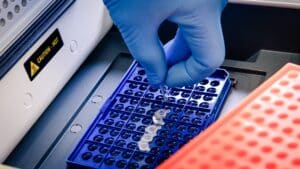Melting Temperature (Tm)
Melting temperature (Tm) is the temperature at which a protein or nucleic acid loses its structural integrity due to denaturation.…
Read MoreParticle Count Test
A particle count test is used to quantify the number of particles in a given sample, particularly in pharmaceutical products.…
Read MoreStokes’ Law
Stokes’ law describes the settling velocity of spherical particles in a fluid, based on factors like particle size, fluid viscosity,…
Read MoreSubvisible Particles (SVP)
Subvisible particles (SVPs) are particles that range from 2 to 100 microns in size and are too small to be…
Read MoreUSP 787
USP 787 is a standard from the United States Pharmacopeia that outlines limits and procedures for detecting subvisible particles in…
Read MoreUSP 788
USP 788 is a similar standard to USP 787 but focuses on detecting subvisible particles in all injectable drug products.…
Read MoreUltrasonication
Ultrasonication uses high-frequency sound waves to disperse particles in a liquid. This method is commonly used to break up particle…
Read MoreVisible Particles
Visible particles are particles larger than 100 microns that can be seen with the naked eye. These particles are often…
Read MoreCalibration
Calibration is the process of adjusting a measurement instrument to align with known standards, ensuring accurate and precise particle size…
Read MoreHydrodynamic Diameter
Hydrodynamic diameter is the effective diameter of a particle as it moves in a fluid, usually measured using dynamic light…
Read More





